This step by step diy project is about how to build a vertical garden. If you want to learn more about building a sturdy but simple vertical garden, pay attention to the detailed instructions shown in this tutorial. This project is ideal for any backyard, especially if you are running out of space. I managed to build this garden planter with common materials and tools. With as little as 15 $ you can create a vertical garden in your garden in just one weekend.
You should always plan everything from the very beginning, in order to prevent costly mistakes and to save time. If this is your first project, you need a friend to give you a hand when assembling the vertical garden. Invest in high quality lumber and plywood, as the components will be exposed to bad weather. Protect the components with appropriate paint or stain.
There are a few tips that you should take into account, if you want to get a professional result. Therefore, take accurate measurements and use professional tools when making the cuts or when drilling pilot holes. Align the components at both ends and add waterproof glue to the joints, if you want to create a rigid structure.
Made from this plan
It’s that easy to build a vertical garden!
Vertical planter plans
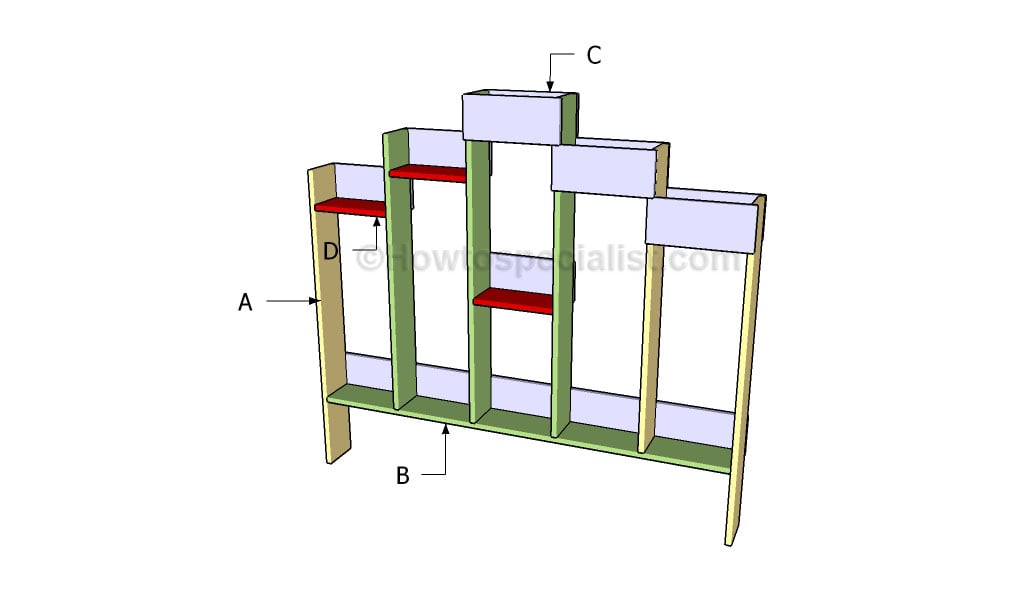
Building a vertical garden
Materials
- A – 2 pieces of 1×6 lumber – 80″ long POSTS
- B – 1 piece of 1×6 lumber – 44″ long, 2 pieces – 38 3/4″ long, 2 pieces – 44 1/4″ long PARTITIONS
- C – 12 pieces of 1×6 lumber – 12 1/2″ long, 2 pieces – 60″ long SIDES
- D – 6 pieces of 1×6 lumber – 11″ long BOTTOMS
- 8 pieces of 1×6 lumber – 8 ft
- 50 pieces of 1 1/4″ screws
- glue, stain / paint
Tools
- Safety gloves, glasses
- Miter saw, jigsaw, pocket hole jig
- Chalk line, tape measure, spirit level, carpentry pencil
- Drill machinery and drill bits
Tips
- Drill pilot holes before inserting the screws
Time
- One Day
Related
Vertical planter plans

Vertical garden plans
The vertical planters cost me about 20 $ to make, taking into account I used pine. If you decide to invest in a better lumber for outdoor, such as cedar, the costs will go up a little. However, this 5′ long planter is still a bargain and it also looks very nice.
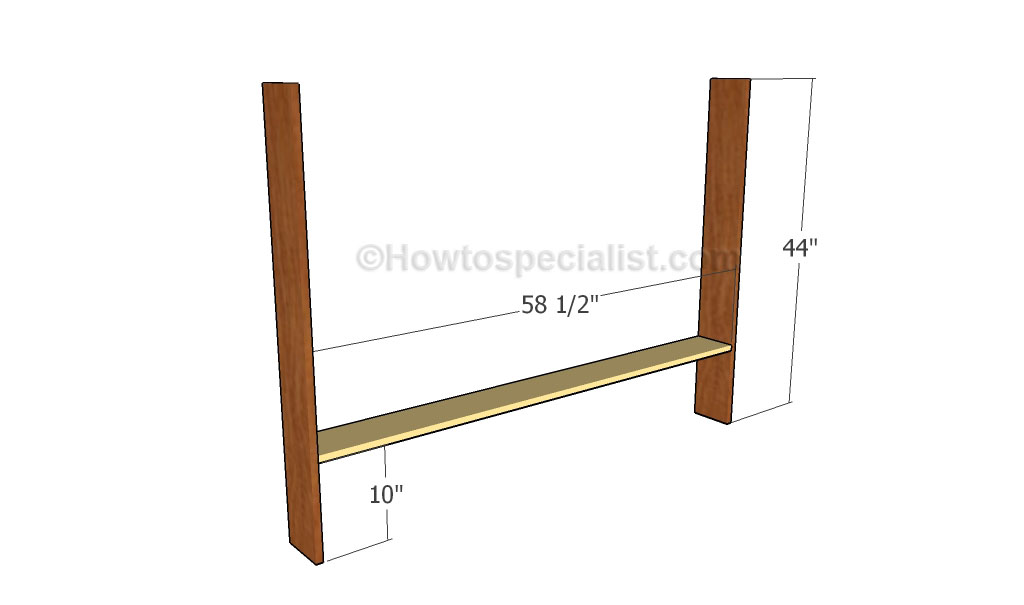
Building the frame of the vertical planter
First of all, you need to assemble the main frame of the vertical garden planter. Drill pocket holes at both ends of the bottom slat and insert 1 1/4″ screws into the vertical supports. Alternatively, you can drill pilot holes through the sides and insert 2 1/2″ screws into the bottom piece.

Fitting the partitions
Continue the project by attaching the partitions to the wooden structure. Drill pilot holes through the bottom and insert 2 1/2″ screws into the vertical partitions.
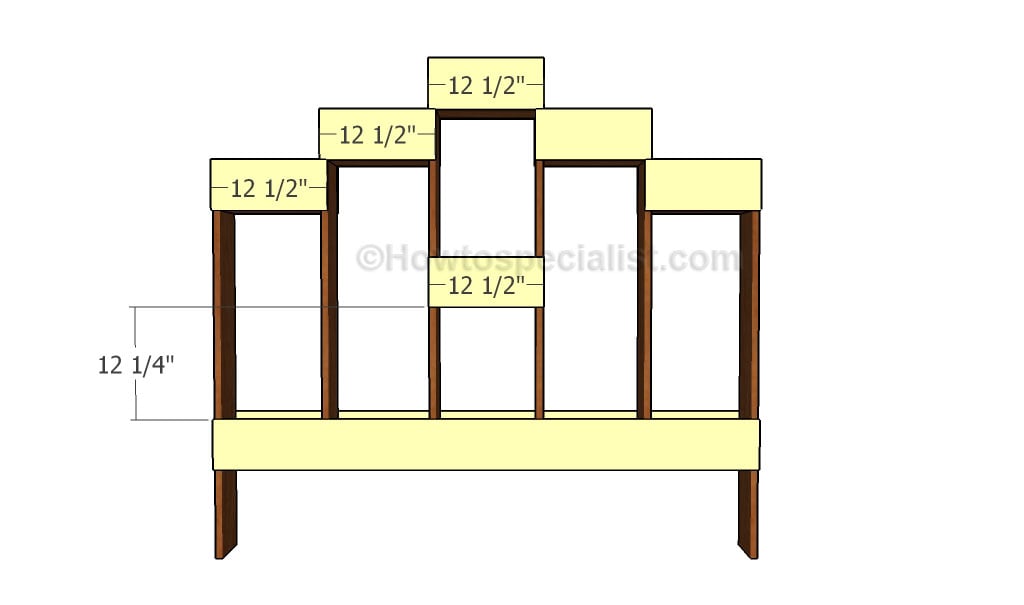
Fitting the sides to the planter
Next, you need to start assembling the planters by attaching the sides to the structure. Cut the components out of 1×6 lumber and attach them to the structure using 1 1/4″ screws, after drilling pilot holes. Make sure you leave at least 1/4″ from the edges, to prevent the wood from splitting.
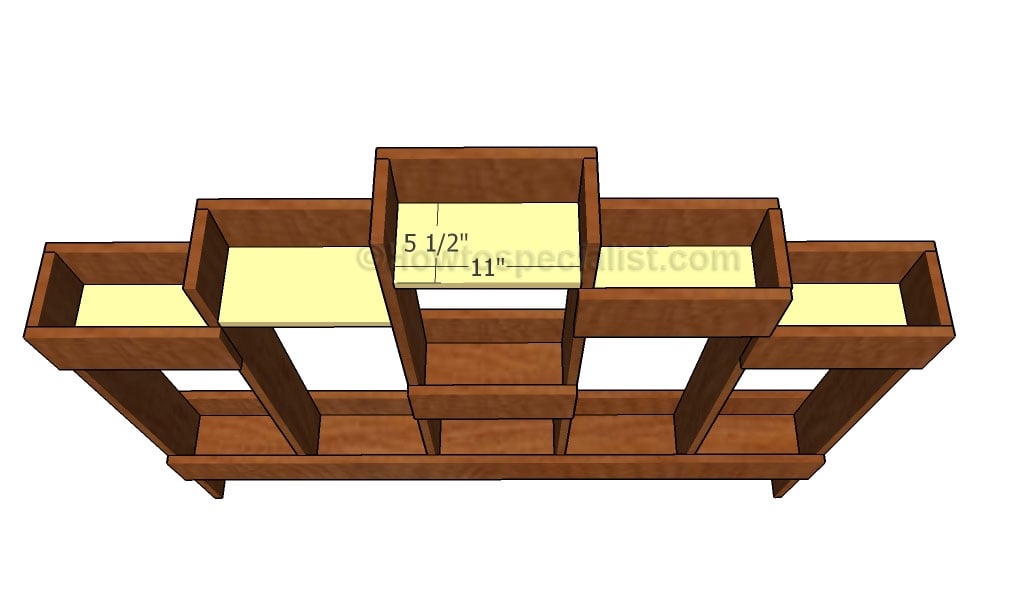
Building the bottom of the planters
Fit the 1×6 pieces to the bottom of the planters to get the job done in a professional manner. Drill pilot holes through the sides of the planters and insert 1 1/4″ screws into the bottom pieces.
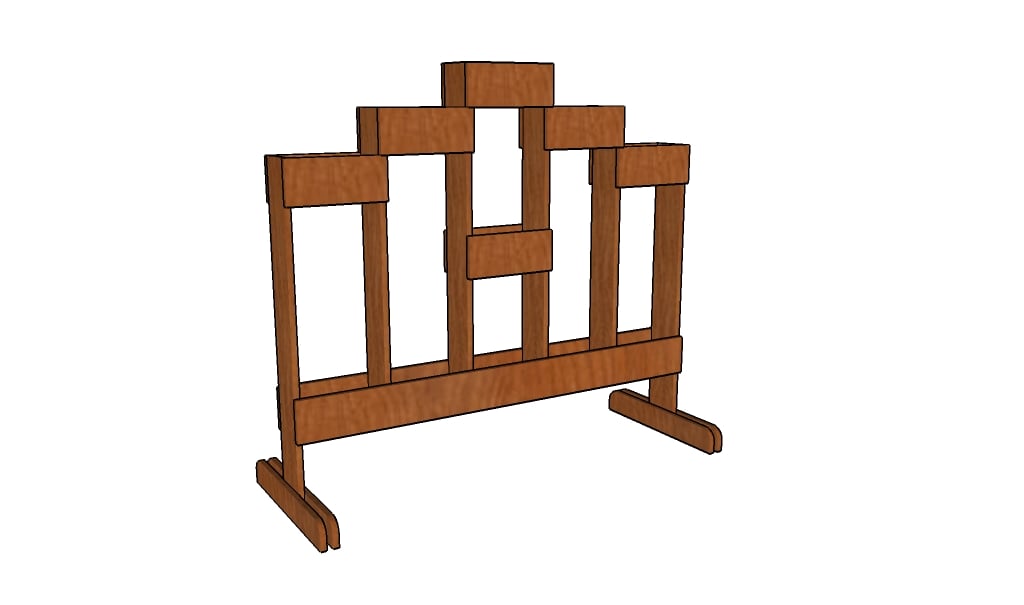
Vertical garden plans
After assembling the vertical planter, you have a few things left to do. For example you can attach trellis to the back of the structure. In addition, you can attach 1×4 slats to the bottom of the vertical supports to create a stand. Alternatively, you can secure the planter to a wall with screws.
How to build a vertical garden

Base of the vertical planter
The first step of my vertical garden project was to assemble the main structure. I used 1×6 slats but you can use 2x4s or 2x6s, as well. Cut the components at the right dimensions and smooth the cut edges with 120-grit sandpaper.

Assembling the base
You can see in the image the pocket holes drilled at both ends of the bottom slat. In addition, I used a square to make sure the corner was right-angled. I added waterproof glue to enhance the strength of the joint.

Fitting-the-bottom-slat
Next, I attached the side of the bottom planter. I aligned all the edges and drill pilot holes. I inserted 2″ screws to secure the slat into place.

Fitting the partitions
I turned the structure upside-down. As you can easily notice in the image, I fitted the partitions to the vertical planter. Cut the components out of 1×6 lumber and place them equally-spaced to the structure. Drill pilot holes through the bottom and insert 2 1/2″ screws into the vertical slats.

Making the joints
You can see in the image how I drilled two pilot holes for each slat. Make sure you take accurate measurements, otherwise the partitions won’t be equally-spaced. Use a square when inserting the screws, to make sure the corners are right-angled. Leave no gaps between the components and check if the edges are flush.

Building-the-planter
Next, I attached the side of the top planter. Cut the piece out of 1×6 lumber and smooth the edges with 120-grit sandpaper. Drill pilot holes through the slat and insert 2″ screws to lock it to the top of the partitions.

Securing the slats with screws
Drilling the pilot holes before inserting the screws is essential, to prevent the wood from splitting. Make sure the screws are centered to support slats.

Front face of the vertical planter
I fitted the rest of the slats to the top of the vertical planter, as shown in the image.

Attaching the bottom of the planters
Afterwards, I cut and fitted the bottom of the planters. Make sure the 1×6 slats fit into place easily. Drill pilot holes along the bottom of the side slats and insert 2″ into the bottom pieces. Add waterproof glue for a tighter bond.

Turning the planter upside down
Turn the structure upside down and attach the rest of the components into place. Drill pilot holes and insert 2″ galvanized screws to lock everything together properly.

Vertical Planter Plans
After assembling all the components, the vertical planter looks at least interesting. I personally like the proportions, but you can adjust them to suit your needs. I still haven’t decided if I build the base stand or attach it to a wall.

Building a vertical planter
After assembling the vertical garden planters, you need to drill a few drainage holes through the bottom of every planter.

Planter boxes
I attached an extra planter to the middle section of the vertical garden, to give it a little more character. You can add even more planter to the structure, if you want to grow more plant species. Apply a few coats of sealer to the wooden structure. In addition, if you want to enhance the durability of the planter, I recommend you to staple film to the inside faces of the planters.

How to build a vertical garden
I hope you enjoyed this this step by step tutorial and take a look over the rest of my projects. I would love to hear your feedback and to see your pins, likes and shares. If you build this diy vertical garden don’t forget to send a few pics.
Thank you for reading our project about how to build a vertical garden planter and we recommend you to check out the rest of the projects. Don’t forget to SHARE and LIKE our projects with your friends, by using the social media widgets, if you want to help us keep adding free woodworking plans.
